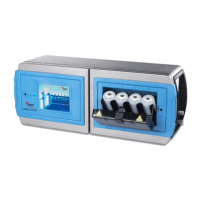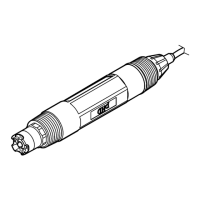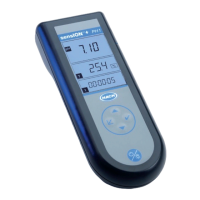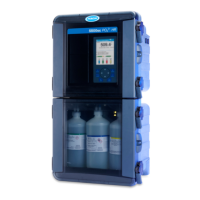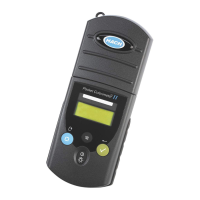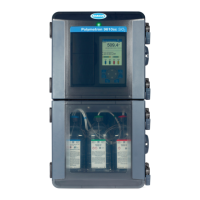The analyzer permits compliance to 21 CFR Part 11 with password protection and an audit trail of all
user actions.
Analyzer startup sequence
The analyzer goes through the sequence that follows when the power switch is set to on.
1.
Splash window: The splash window shows at startup while the system launches the application.
2. Verify lamp monitor: After the system has initialized, it verifies that the lamp monitor works. The
main lamp is set to on and the analyzer makes sure that a voltage is returned.
3. Sample bottle check: The system identifies if the bottles loaded in the bottle bay match the last
known configuration. If the bottles contain RFID tags, the analyzer reads the tags and compares
them against the information saved in the settings. If the RFID tag does not match what is saved
in the settings, the settings are updated with the new information and a warning is triggered. If the
settings list a non-RFID tagged bottle in one of the bottle positions and an RFID tag cannot be
detected in that position, the analyzer assumes the bottle is still present.
4. Start sampling: If the analyzer is configured for online TOC, it starts to take a sample after
power is supplied.
5. Print header: After the system has started up, it prints a daily header if a printer is attached.
Run modes
The analysis cycle
An analysis cycle includes a flush of the analysis cell, oxidation and idle time. Idle time occurs only
after an online TOC analysis is completed and only if the elapsed time (combined flush and oxidation
time) is not more than the cycle time. The oxidation time changes based on the amount of total
organic carbon in the sample. The flush time is configurable. The idle time changes based on the
cycle time.
During idle time, the analyzer can operate in one of three ways: flow without conductivity, flow with
conductivity or no flow. Refer to Configure the general settings on page 27.
To select the run mode, refer to Select the run mode on page 23. Descriptions of the run modes
follow.
Online TOC mode
In online TOC mode, the cell valve opens to flush the cell. When flushing is completed, the sample
valve closes, the analysis starts, and initial conductivity and temperature readings are sent to the
TOC algorithm. Conductivity is monitored until the oxidation is completed.
When oxidation is completed, the analyzer reports the results to the home screen, the data log and
the printer, based on the printer settings and if the printer is connected. If the elapsed time is more
than or equal to the cycle time in settings, the next online TOC analysis is started. If not, the analyzer
goes to the idle mode.
Conductivity mode
In conductivity mode, the home screen shows the conductivity and temperature readings.
In conductivity mode, the analyzer first makes sure that the UV lamp is off and the cell valve is open
to flush the cell. The analyzer reports the current readings for conductivity and temperature every
time a new value is available. The reported value is an average of the data over the last two
seconds. The average reading is also sent to the printer, based on the printout settings and to the
data log. One data point is sent to the log every 60 seconds.
CIP Validation mode
In CIP Validation mode, the home screen highlights the TOC reading, with conductivity, temperature,
sample time and curve type shown in smaller text. Additionally, the initiate CIP sampling Run button
is shown on the right side of the display.
When the CIP Validation button is pushed, the analyzer measures conductivity until the readings
goes below a specified threshold or until a specified time interval has expired. Then, the instrument
starts one TOC analysis. When the TOC analysis is completed, the analyzer goes to the Idle state.
52 English
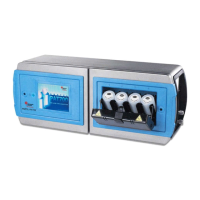
